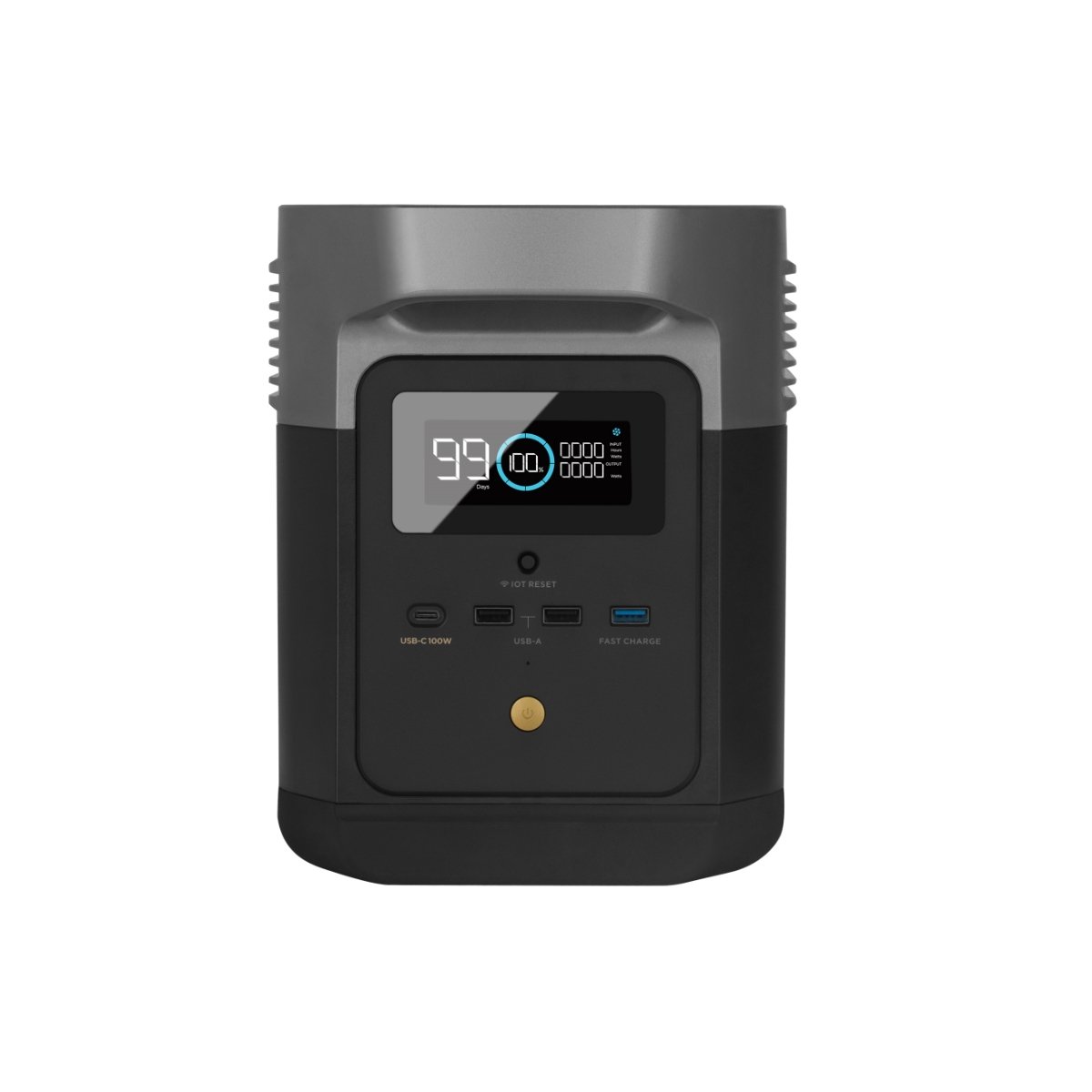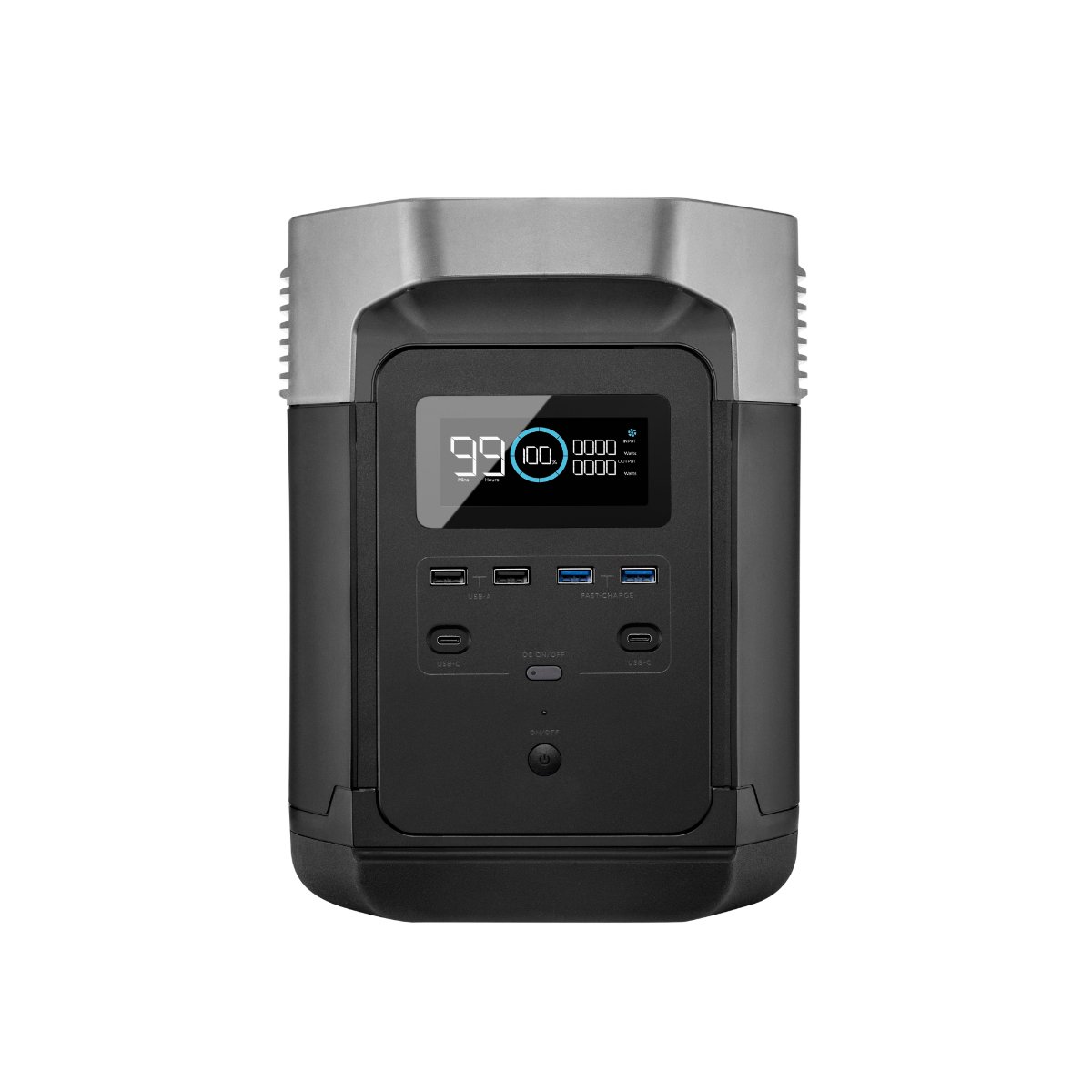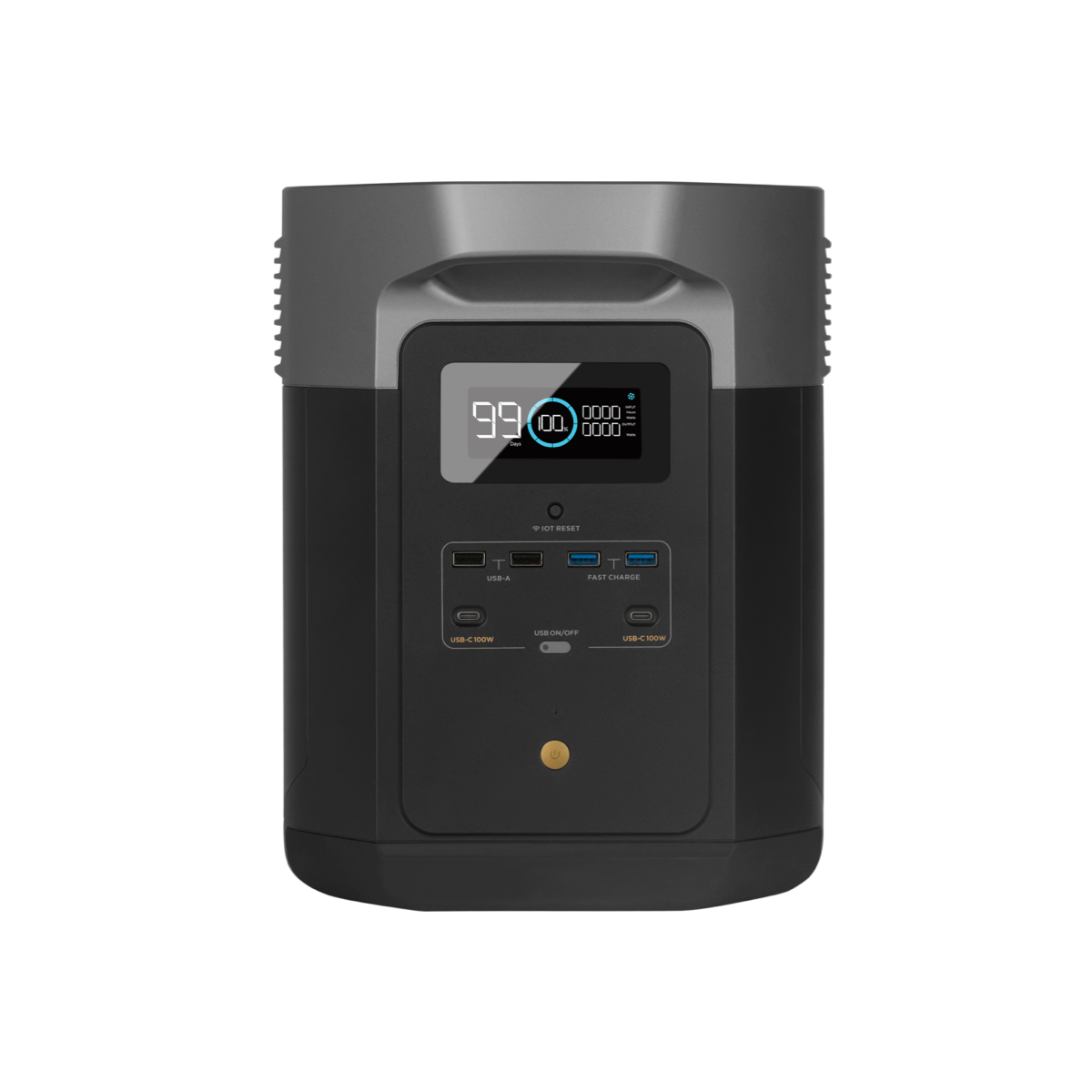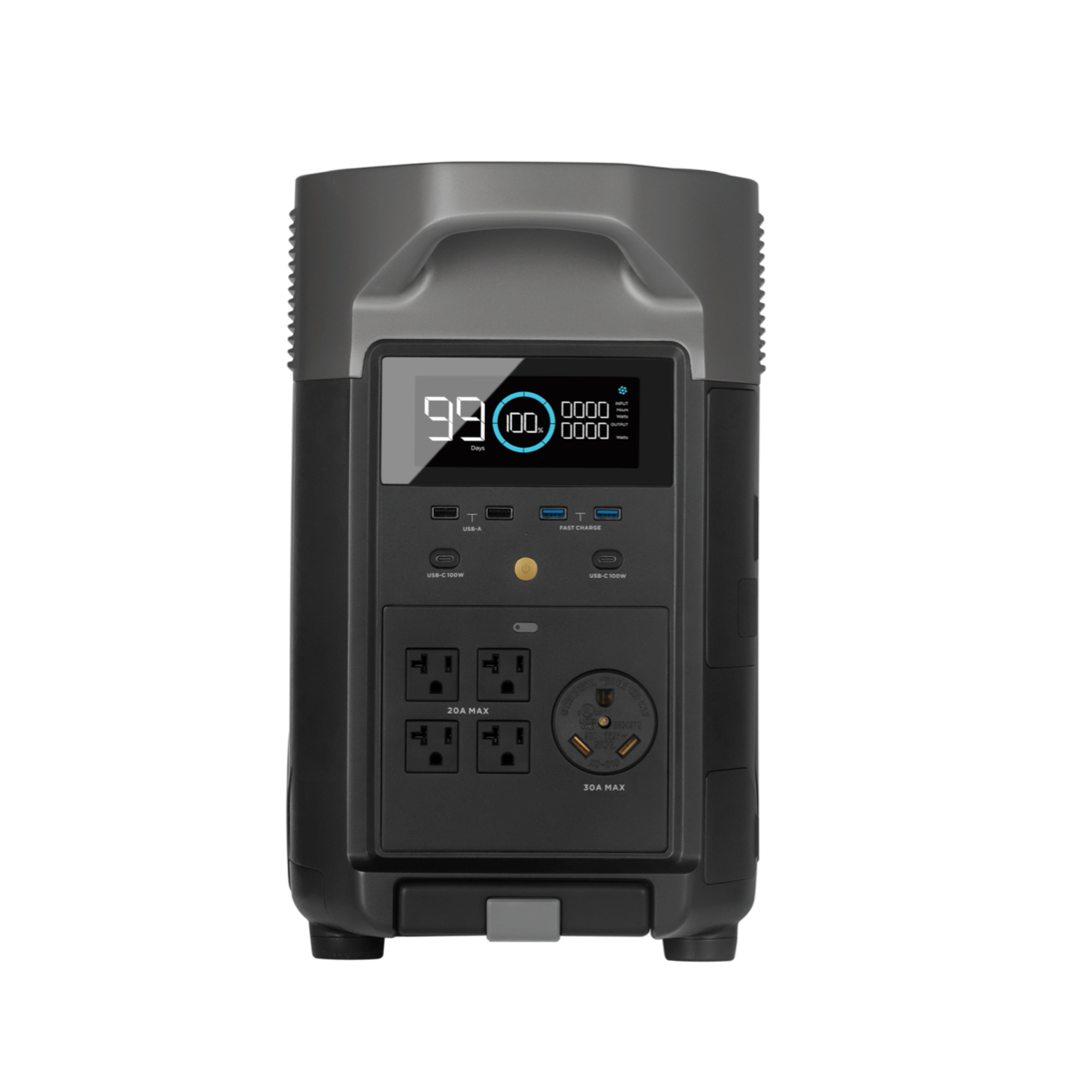The Difference Between a Blackout vs Brownout?
While most of us are familiar with the term ‘blackout’, there is another type of power outage called a ‘brownout’. This guide aims to help you understand the differences between a blackout and a brownout. It also highlights how an EcoFlow portable power station can help you during a power outage.
What is a Blackout?
By definition, a blackout occurs when there is an unexpected interruption of power. There’s no way of predicting how long a blackout will last. It could be a matter of minutes, hours, or even days depending on the cause. A blackout can occur for a variety of reasons, here’s a list of what can cause a blackout:
- Unpredictable weather patterns like lightning strikes, storms, or natural disasters
- A spike in power demand, pushing the grid past its limit
- Power lines or transformers being damaged
- Fallen tree branches on power lines
- Ice build-up on power lines

What is a Brownout?
Perhaps less commonly known is a ‘brownout’. But what causes a brownout? In a nutshell, a brownout is caused by partial disruption of mains power. The biggest difference between a blackout and a brownout is that a blackout is an unexpected, complete shutdown of electricity.
Brownouts are a temporary interlude planned by your utility provider. Throughout a brownout, electricity is still provided to your home, but at reduced voltage levels. Typically, your utility provider will reduce voltage by 10-25%.
So why do utility providers plan a brownout? Your utility provider will plan a brownout to prevent a blackout. Utility companies do this when they know a demand spike is coming. They’ll migrate electricity, to avoid putting too much pressure on the grid.
Another difference between brownouts and blackouts is that brownouts are short-term. Your utility company will know when it will start and when it will finish.
While you can still use your appliances and devices during a brownout, it’s not advisable. Due to fluctuating voltage, your appliances could get fried. It’s best to unplug them or have an alternative power supply, like an EcoFlow DELTA series portable generator, for the duration of the brownout.
What is a rolling Blackout?
Another situation you could experience is a ‘rolling blackout’. Like a brownout, this is a controlled blackout planned by your utility provider. This helps to prevent the grid from being overloaded due to a demand spike. The distinct difference is that during a rolling blackout the power is completely switched off. However, the power is usually only shut off for an hour or two.
Most states are affected by rolling blackouts. However, California tops the list. During wildfire season, rolling blackouts are a regular occurrence. They are used to help manage peak demand and reduce the risk of wildfires.
How can an EcoFlow DELTA portable power station help with a blackout or brownout?
One way to safeguard against a blackout or a brownout is to create a home backup system to reduce your reliance on the grid. This is where the EcoFlow DELTA series solar generators come in handy.

DELTA mini
| Capacity 882Wh |
| Phone (11W) 62 Charges |
| Laptop 60W 12 Charges |
| Mini Fridge 12 Hours |
| Blender (500W) 1.5 Hours |
| Coffee Machine (1000W) 0.7 Hours |
| Air Fryer (1500W) 0.5 Hours |

DELTA
| Capacity 1260Wh |
| Phone (11W) 104 Charges |
| Laptop 60W 19 Charges |
| Mini Fridge 19 Hours |
| Blender (500W) 2.1 Hours |
| Coffee Machine (1000W) 1.1 Hours |
| Air Fryer (1500W) 0.7 Hours |

DELTA Max
| Capacity 2016Wh |
| Phone (11W) 175 Charges |
| Laptop 60W 32 Charges |
| Mini Fridge 33 Hours |
| Blender (500W) 3.5 Hours |
| Coffee Machine (1000W) 1.9 Hours |
| Air Fryer (1500W) 1.2 Hours |

DELTA Pro
| Capacity 3600Wh |
| Phone (11W) 313 Charges |
| Laptop 60W 57 Charges |
| Mini Fridge 57 Hours |
| Blender (500W) 6.5 Hours |
| Coffee Machine (1000W) 3.3 Hours |
| Air Fryer (1500W) 2.2 Hours |
AC Output

You’ll need a portable power station with a high AC output to help you start up the essentials. All the DELTA series models come with more than enough power. They stretch from 1400W with DELTA mini to 3600W with the DELTA Pro. To give you context, heavy-duty appliances like fridges need anywhere between 840W – 1200W to start up. This makes any DELTA series model a great option for blackouts or brownouts. What’s more, DELTA series units are all fitted with X-Boost technology, which extends the output if you need a bit more power.
Capacity
Secondly, you’ll need something that has enough capacity to cover the run time of your home appliances. All DELTA models have a relatively large capacity for their size and can run the majority of essential household appliances. However, with DELTA Max and DELTA Pro having expandable capacities, they are perfect for running the bigger stuff. You’ll be able to run AC units, electric dryers, or freezers in the event of a blackout or brownout.
Charging
Finally, you’ll want to make sure you have a portable power station with a plethora of charging options at your disposal. With any EcoFlow DELTA Series model, this is exactly what you’ll have. If you’re an avid planner, EcoFlow’s DELTA series portable power stations are great as they can charge and store the grid’s power extremely quickly. In a matter of 65 minutes, any DELTA model can receive an 80% charge. Particularly useful if you know a brownout has been issued by your utility provider.
Renewable Energy Sources
I guess you’re wondering what charging options you have in the event of a blackout? Well thanks to each DELTA model’s solar compatibility, you can easily attach solar panels. This gives you more charging convenience, particularly if you don’t know how long a blackout will last. Each DELTA model has a different solar input depending on its size, stretching from 300W to 1600W solar input. You can check out a DELTA Series comparison to see which solar input suits you here.
However, if you’re on a budget and you don’t want to go down the solar panel route, it’s always possible to charge a DELTA model elsewhere. As blackouts are localised, take your unit and charge it at a friend’s place a few blocks away. Alternatively, if you have a DELTA Pro, take it to an EV charging station and add juice that way. In around 90 minutes, you’ll be at 100%, a great tool in the event of a rolling blackout.
Final thoughts
With our dependence on electricity growing and the pressure on the grid being pushed to its limits, blackouts and brownouts aren’t going away anytime soon. This coupled with the growth of unpredictable weather patterns, there’s never been a better time to prepare. The question is, which portable power station do you choose? Well, it completely depends on your household needs. If it’s power and capacity you’re after for the ultimate home backup, DELTA Max and DELTA Pro are great options. But if you’re in a state where blackouts and brownouts are less common, DELTA or DELTA Mini could be more for you.




Leave a comment
This site is protected by reCAPTCHA and the Google Privacy Policy and Terms of Service apply.